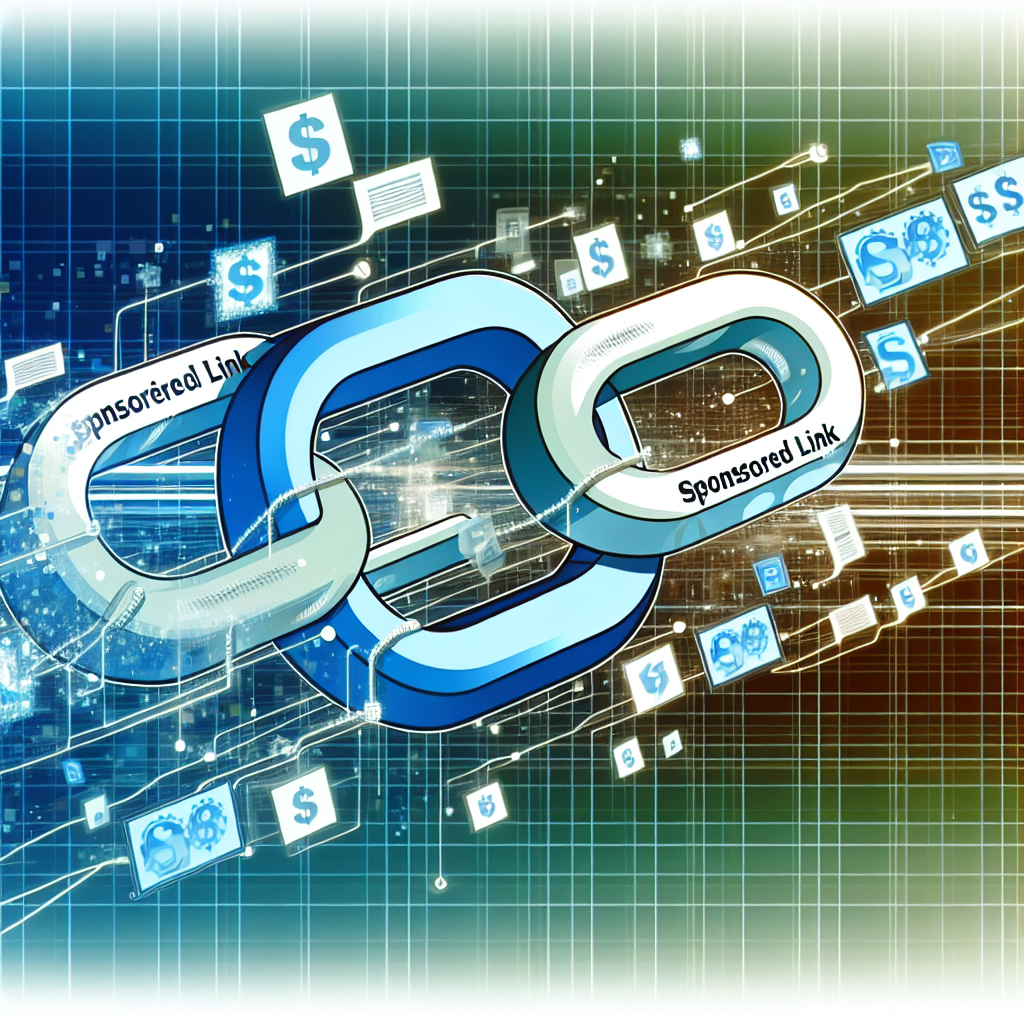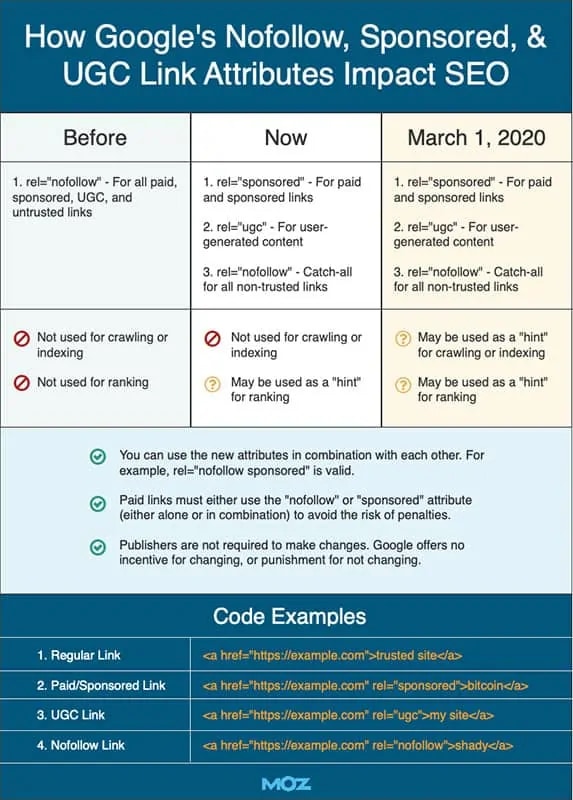Uncover the secrets of SEO with the mysterious sponsored link attribute – what is it and how can it help you?

Image courtesy of via DALL-E 3
Table of Contents
- Introduction to Sponsored Link Attribute
- How the Sponsored Link Attribute Works
- Why Use the Sponsored Link Attribute?
- When to Use the Sponsored Link Attribute
- What Happens if You Don’t Use It
- Common Mistakes and How to Avoid Them
- Examples of Sponsored Link Attribute
- Conclusion and Summary
- Frequently Asked Questions (FAQs)
Introduction to Sponsored Link Attribute
Have you ever wondered how websites make money by promoting other products or services? Well, they often use something called a sponsored link attribute to let both users and search engines know that the link is paid for. In this article, we’ll dive into what sponsored links are and why using the sponsored link attribute is crucial in the online world.
What is a Sponsored Link?
A sponsored link is a special type of hyperlink that directs you to a webpage that is paying to be there. Just like how you see ads on TV or in magazines, these sponsored links help businesses get more visibility online. When a website includes sponsored links, they need to use a particular code to show that it’s an advertisement and not just a regular recommendation.
Importance of Sponsored Link Attribute
Now, you might be wondering, why bother with this sponsored link attribute stuff? Well, using this attribute is like being honest about what you’re seeing. It tells people, and search engines like Google, that this link is a paid promotion. This transparency builds trust with users, making sure they know when something is an ad or a genuine recommendation.
How the Sponsored Link Attribute Works
Let’s start by understanding the ‘rel’ attribute in HTML. This attribute is like a label that tells search engines and users more about the relationship between the linked pages. It helps to categorize and identify different types of links on a webpage.
Adding ‘sponsored’ to a Link
Now, imagine you have a link on your website to another site that has paid you to promote their products. By adding the ‘sponsored’ value to the ‘rel’ attribute of this link, you are essentially telling search engines that this link is a paid advertisement. This way, users can differentiate between regular links and sponsored ones easily.
Why Use the Sponsored Link Attribute?
Using the sponsored link attribute on your website can help improve the trustworthiness of your content. When you clearly mark sponsored links, it shows transparency to your readers that certain links are paid for, and not just organic recommendations. This transparency can build trust with your audience and demonstrate your commitment to honest practices.

Image courtesy of aioseo.com via Google Images
Helps with Google Guidelines
By using the sponsored link attribute, you are also ensuring compliance with Google’s guidelines regarding sponsored content. Google places importance on transparency and clearly distinguishing paid links from organic ones. Failure to do so can result in penalties from search engines, affecting your website’s search ranking. Therefore, using the sponsored link attribute not only benefits your audience but also helps you stay in good standing with search engines like Google.
When to Use the Sponsored Link Attribute
When it comes to using the sponsored link attribute on your website, there are specific scenarios where it is essential to incorporate this attribute. Let’s explore two common situations when you should use the sponsored link attribute.
Paid Promotions and Advertisements
One instance where you should utilize the sponsored link attribute is when you have paid promotions or advertisements on your website. By including this attribute in your links, you are transparently informing users that the link is a paid promotion. This helps maintain honesty and clarity in your content, building trust with your audience.
Affiliate Links
Another situation where the sponsored link attribute is crucial is when you are incorporating affiliate marketing links on your website. Affiliate links are those that direct users to a product or service, and if a purchase is made through that link, you earn a commission. By adding the sponsored attribute to these links, you are disclosing to your audience that you may receive compensation for purchases made through those links.
By using the sponsored link attribute in these scenarios, you are not only adhering to best practices but also complying with guidelines that promote transparency and trustworthiness online.
What Happens if You Don’t Use It
When you don’t use the sponsored link attribute when you should, search engines like Google might not be happy about it. These search engines have guidelines in place to ensure fairness and transparency on the internet. If you ignore these guidelines and don’t use the sponsored link attribute when you’re supposed to, there could be consequences.

Image courtesy of aioseo.com via Google Images
Loss of Trust
Imagine you’re browsing the internet and click on a link that looks like it’s giving you honest information. But if that link turns out to be a paid promotion or an affiliate marketing link that wasn’t clearly labeled as such, you might feel tricked or misled. This can lead to a loss of trust between you and the website that shared that link. Using the sponsored link attribute helps maintain trust with your audience by being transparent about the nature of the links you share.
Common Mistakes and How to Avoid Them
One common mistake when using the sponsored link attribute is forgetting to add it to your links. This can happen when you are in a rush or simply overlook the importance of including it. To avoid this mistake, make it a habit to check each link on your website and ensure that the sponsored attribute is correctly added where necessary. Take your time to review your content before publishing to guarantee that all sponsored links are properly marked.
Using the Wrong Attribute
Another mistake that many people make is using the wrong attribute instead of the sponsored link attribute. It’s important to remember that using the correct attribute is crucial for search engines to understand that a link is sponsored. To prevent this error, familiarize yourself with the specific syntax required for the sponsored link attribute. Double-check your code to confirm that you have used the ‘sponsored’ value within the ‘rel’ attribute appropriately.
Examples of Sponsored Link Attribute
Let’s dive into some examples to better understand how the sponsored link attribute is used in practice. These examples will help clarify the concept and show you how to implement it correctly on your website.

Image courtesy of www.ezoic.com via Google Images
Example 1: Basic Sponsored Link
Imagine you have a website where you want to include a sponsored link to a partner’s page. In your HTML code, you would use the ‘a’ tag to create the link. To indicate that this link is sponsored, you would add the ‘rel’ attribute with the value ‘sponsored’ like this:
<a href="https://www.partnerwebsite.com" rel="sponsored">Visit our Partner</a>
By adding the ‘rel=”sponsored”‘ attribute to the link, you are clearly signaling to search engines that this is a sponsored link, helping you comply with regulations and maintain transparency with your audience.
Example 2: Advanced Usage
Now, let’s consider a more complex scenario where you have multiple sponsored links on a page. In this case, you can use the ‘rel’ attribute with multiple values to differentiate between various types of links. Here’s how it might look:
<a href="https://www.advertiser1.com" rel="sponsored nofollow">Advertiser 1</a>
<a href="https://www.advertiser2.com" rel="sponsored nofollow">Advertiser 2</a>
In this example, by adding both ‘sponsored’ and ‘nofollow’ values to the ‘rel’ attribute, you are indicating that these links are sponsored and should not pass link equity. This level of detail helps search engines understand the nature of the links on your site and ensures compliance with guidelines.
Conclusion and Summary
In conclusion, the sponsored link attribute plays a vital role in maintaining transparency and trustworthiness on the internet. By clearly marking sponsored links, websites adhere to Google’s guidelines and ensure that users can distinguish between regular content and paid promotions easily.
Main Takeaways
The key takeaways from this article are:
- Understanding what a sponsored link is and why it’s important to use the sponsored link attribute.
- Learning how the sponsored link attribute works by adding the ‘sponsored’ value to the ‘rel’ attribute in HTML.
- Recognizing the benefits of using the sponsored link attribute, such as improving trustworthiness and complying with search engine guidelines.
- Identifying situations when it’s necessary to use the sponsored link attribute, like for paid promotions and affiliate marketing links.
- Realizing the potential consequences of not using the sponsored link attribute, such as search engine penalties and loss of user trust.
- Acknowledging common mistakes related to the sponsored link attribute and knowing how to avoid them.
- Viewing examples of how the sponsored link attribute is implemented in HTML.
Why It’s Important to Understand This
It is crucial to grasp the concept of the sponsored link attribute because it not only helps websites maintain integrity and transparency but also ensures compliance with search engine guidelines. By correctly using the sponsored link attribute, websites can build trust with their audience and establish credibility in the online world.
Frequently Asked Questions (FAQs)
What is a ‘sponsored’ link attribute?
A ‘sponsored’ link attribute is a way for website owners to indicate to search engines that a particular link on their site is a result of a paid sponsorship or advertisement. It helps distinguish between organic content and paid promotions, ensuring transparency to users.
Can I use other attributes with ‘sponsored’?
Yes, you can use other attributes in conjunction with the ‘sponsored’ attribute. For instance, you can combine it with the ‘nofollow’ attribute to indicate that while a link is sponsored, it should not pass any authority to the linked page. This allows for more precise control over how search engines treat the link.







